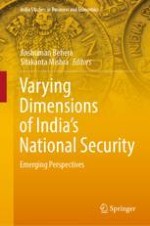2022 | OriginalPaper | Buchkapitel
4. ‘Secrecy as Security Strategy’ in India’s Nuclear Governance
verfasst von : Sitakanta Mishra
Erschienen in: Varying Dimensions of India’s National Security
Verlag: Springer Nature Singapore
Aktivieren Sie unsere intelligente Suche, um passende Fachinhalte oder Patente zu finden.
Wählen Sie Textabschnitte aus um mit Künstlicher Intelligenz passenden Patente zu finden. powered by
Markieren Sie Textabschnitte, um KI-gestützt weitere passende Inhalte zu finden. powered by
